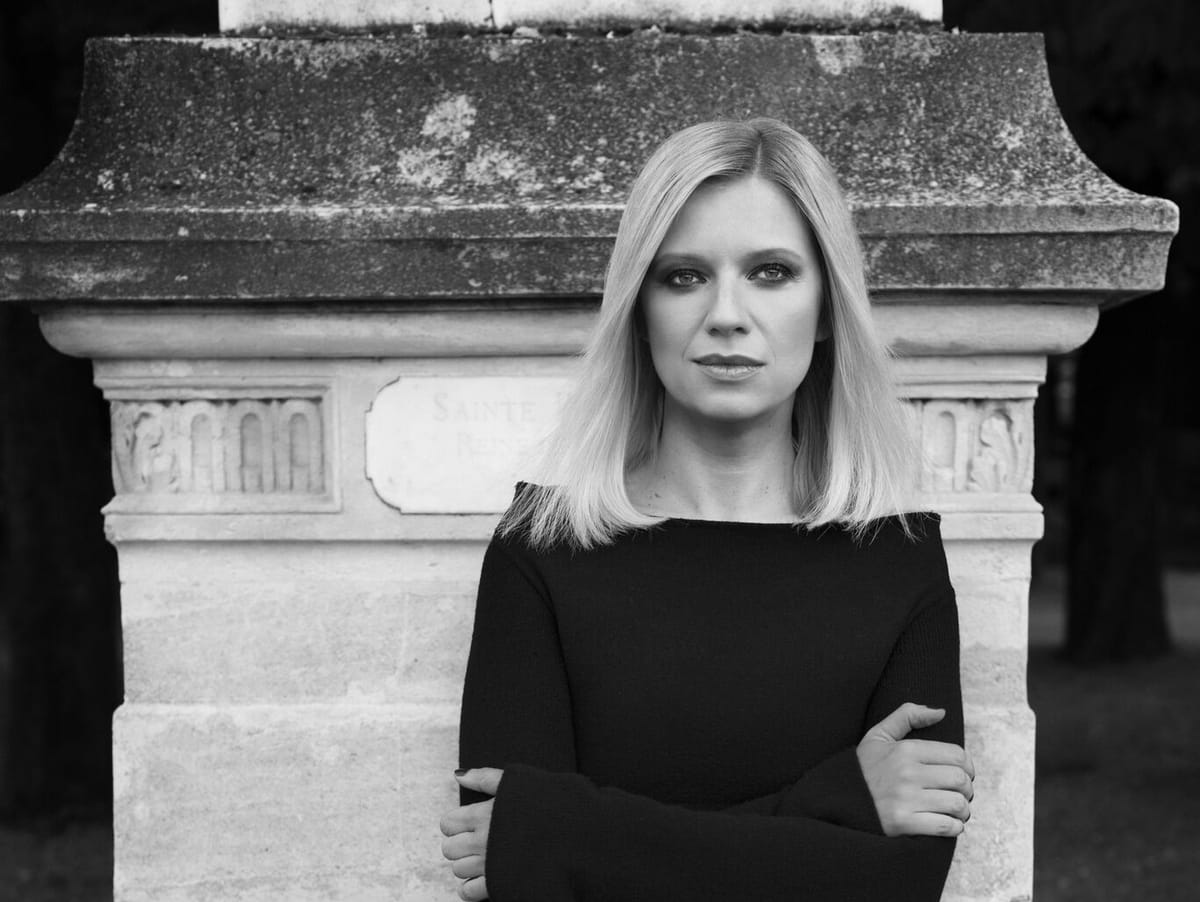Valentina Lisitsa in Paris

I was agog in anticipation. Playing to a capacity audience on April 8 at the Theatre de Champs-Élysées, Paris, I had the unique experience of listening to the much-touted Lisitsa play live for the first time. Her reputation has consistently preceded her wherever in the world she plays. She is a self-made pianist. Born in Kiev, she started playing piano at age 3. Her mother, a seamstress, first encouraged her to be a piano teacher. After preliminary studies at the conservatory in Kiev she and her husband Alexsey Kuznetzoff won a two piano competition and immigrated to the US.
She launched her YouTube channel in 2007 and the rest as they say is history. She is probably the only world-class artist whose early career was documented in social media. Her husband recorded her playing the complete Chopin etudes and uploaded the video file to YouTube. They then booked the 6000 seater Royal Albert Hall in the Kensington area of London for a solo recital in June 2012. This was unprecedented as the only solo pianist ever to have played there alone in the past was the already world-famous Evgeny Kissin and she was a nobody known only to her online fans. Her programme then consisted of the “Moonlight” sonata and several encore-type pieces all suggested and selected by her online following. The concert was a sell-out and hugely successful. This led to Decca signing her to an exclusive contract and acquiring the rights to issue her recording of the Chopin etudes on CD. They also issued the Albert Hall concert on CD as well as DVD.
Around the same time the couple hired the London Symphony Orchestra to record all four piano concertos by Sergei Rachmaninov. The rights to these were also acquired by Decca. She has then been typecast as a Rachmaninov specialtist recording all his piano music. The programme in Paris is testimony to the fact that she is primarily a virtuoso. I have not seen as many fire-eating tricks in one evening before or since. And this is not necessarily complimentary of the overall playing.
The evening began with Ravel’s monumental tryptych “Gaspard de la nuit”. These three contrasting pieces should sound magical in the best hands. Technically her playing was faultless. While the first movement (Ondine) was suitably shimmering, it lacked architectural structure with the climax less than perfectly judged. The haunting second movement (Le Gibet) was stealthy and eerie evoking the hanging dead carcasses with stark beauty. The crashing dissonant chords and repeated notes in Scarbo, a goblin or spirit as finale brought forth a tumultuous end. Very much, the sum of its parts, the whole was extraordinary yet strangely lacking.
The second piece before the interval was Rachmaninov’s cliff-hanger of a sonata, the second, most pianists would be content to end a programme with. She went on to deliver this in one huge sweep crashing chords and sweeping arpeggios, scales and melancholy sighs et al. She knows this work inside-out and her trademark attributes came to the fore in this admirably. I could say she played it as if in a trance (dare I say in her sleep?). At any rate she did cast some sort of a spell for the enraptured audience leapt forth in gushing applause.
Regaling us in a change of outfit for the second half devoted to the music of Chopin. Here she comes up under stiffer competition. These days the Four Scherzos are part of the repertoire of any finalist of the myriad piano competitions worldwide. And do we not all have favourite versions of the set and individual ones? I found that, apart from efficiency and a certain predictability, there was muted pleasure except for the uninitiated. As is customary these days there was applause after each Scherzo rather than treating the work as a whole (for example as in the case of his Preludes). But then it is as much the fault of the audience which appeared to feed off its own delight while the pianist seemed to play on unmoved.
Three more Chopin pieces followed as encores. First to come the Andante spianato and Grand Polonaise, suitably lyrical for the the Andante and magisterially rhythmic in its Polish dance. Then the Valse in D flat Op 64/1 (The Minute) and the Fantasie-Impromptu in C sharp minor. So all in all rather a mixed bag.




